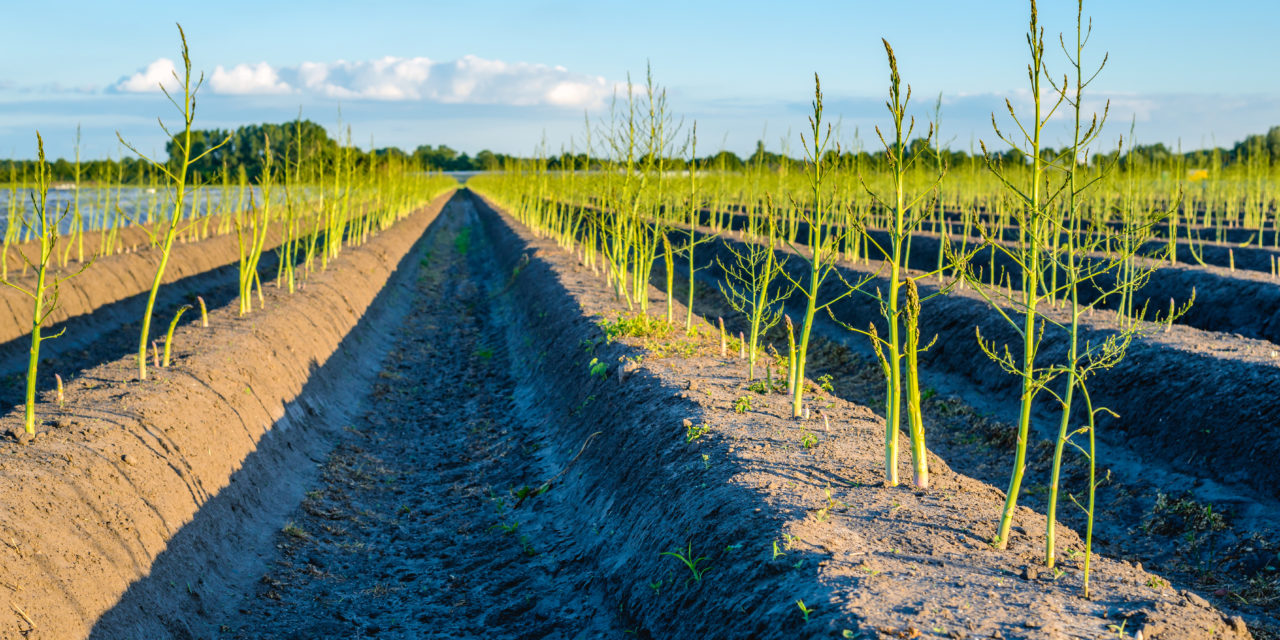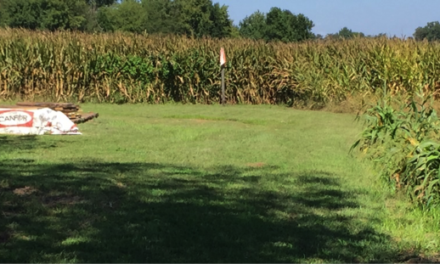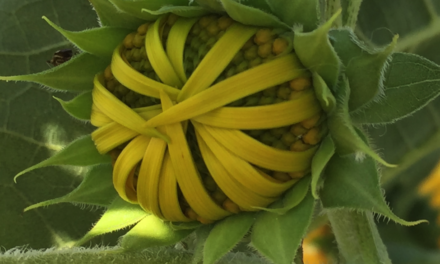Did you know that asparagus is one of the most nutritious vegetables grown in home gardens, surpassed only by spinach and Swiss chard? This spring classic is often the earliest vegetable ready for harvest. Asparagus (Asparagus officinalis) is in the same family as onions. The asparagus plant is composed of ferns, crown and a root system. The ferns are not true leaves but are stems that carry energy to the crown. The crown is a collection of rhizomes and lateral roots that produce new ferns. The root system of the asparagus plant will grow to a depth of 6 to 10 feet making it vital that the soil is not too shallow to promote plant health. Placement of your bed on a slope or hillside will help with both root development and adequate drainage.
As one of the few garden perennials, you need to plant it in an area where it will not be disturbed. No need to limit its location to the garden. It may make cultivating your garden site more difficult if you’re using a large garden tractor or tiler since asparagus cannot be moved once it is planted.
Even though this delightful vegetable originally grew in swampy areas, the cultivated plants do not like wet feet, making raised beds an excellent option. A well-drained location with at least 6 to 8 hours of full sun is required. While it will grow in most soil types, it prefers a sandy loam or a fertile loose soil. The tender spears will also need some protection from strong winds until the plants are firmly established. Planting in a north and east location is preferred to south and west as late frosts can kill off the tender emerging spears, delaying the rest of the harvest.
Trying to grow asparagus from seed can be done but you are not likely to be able to achieve the depth needed for the crown and the results will not be as successful as using one year crowns. Do not spend the extra money on second year or jumble crowns because as they are removed for their beds the damage to the lateral roots causes so much transplant shock that they will take a long time to recover. Asparagus crowns planted close together will produce smaller thinner spears while spacing them further apart will cause them to yield larger spears.
Preparing a bed for asparagus requires digging trenches after you work the soil. Asparagus roots need a thick layer of soil protection both from the elements and from the hazards of cultivation. Remember that asparagus is a rhizome with lateral roots. If it is planted too close to the surface, it makes deep hoeing hazardous so the crowns need to be planted deeply. Dig a trench 12 inches deep and 18 inches wide, with 4 feet between trenches. I know the new hybrids recommend less digging but since you only dig them once, I will still go the extra depth and width of standard traditional practice. After you have worked the soil, add lime if soil pH is too acid, it does best in neutral 7.0 soil. Also add 10-10-10 fertilizer one pound to each 10 feet of trench. Then add 4 inches of old compost in the bottom of the trench to keep the plants well fed for years.
Walk over the soil to firm it and rake it to make it level. Now it’s ready to accept the asparagus crowns. Have a great day gardening! Anne May






